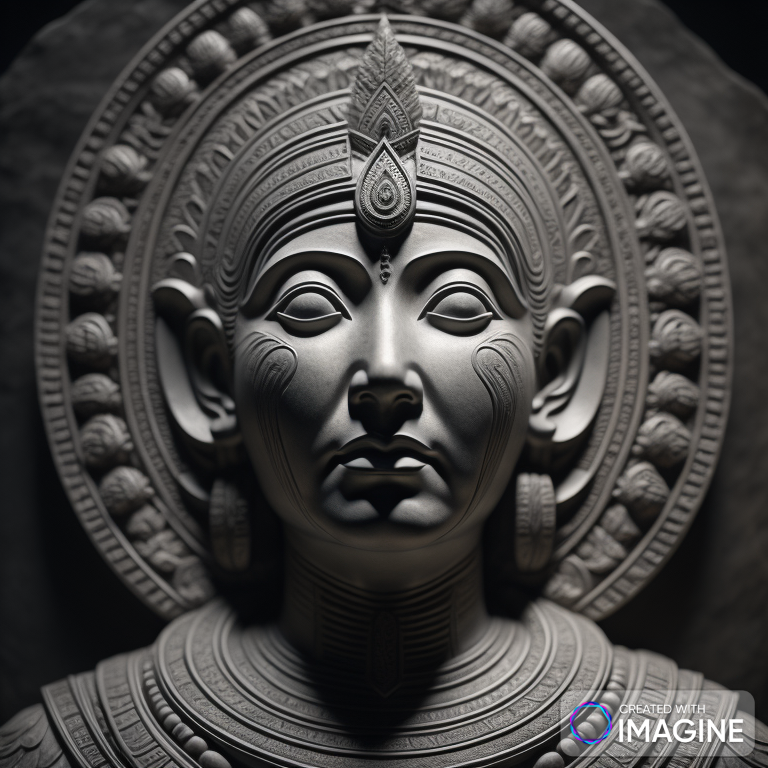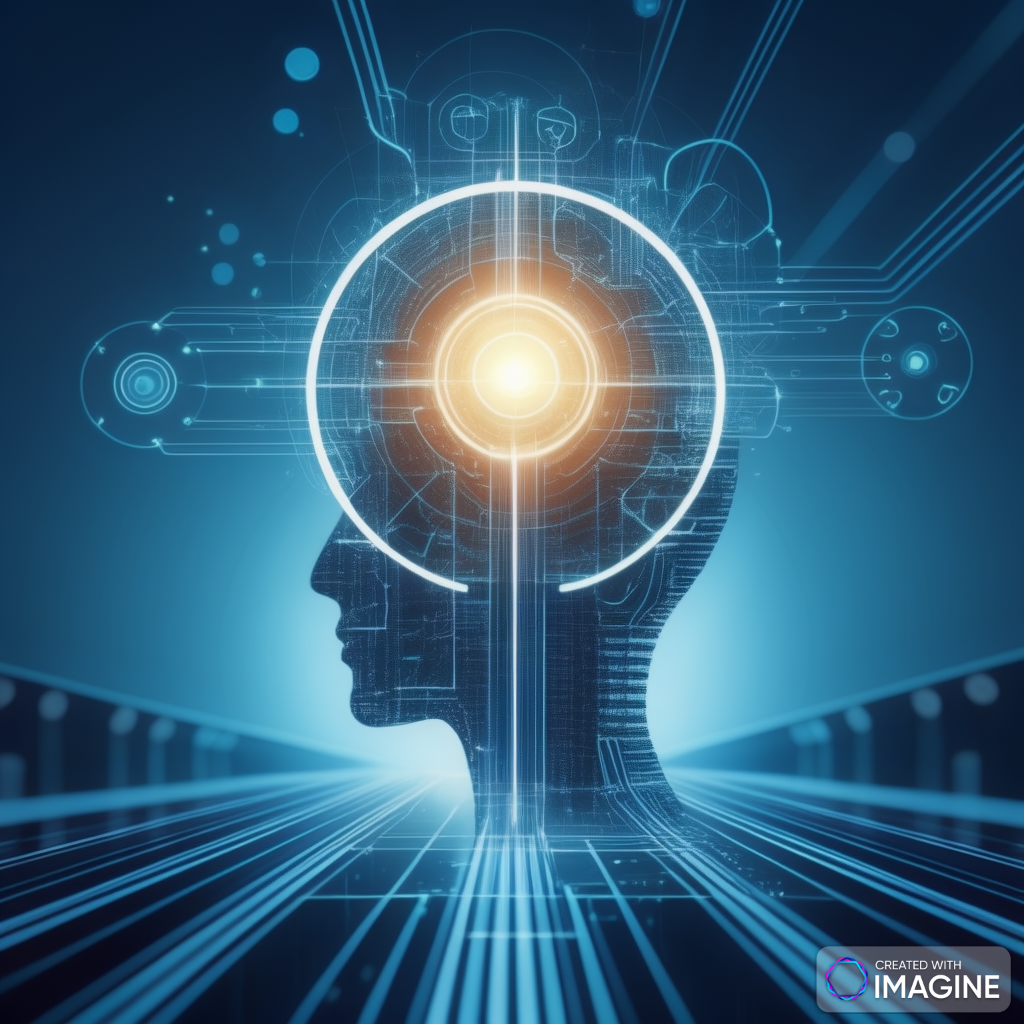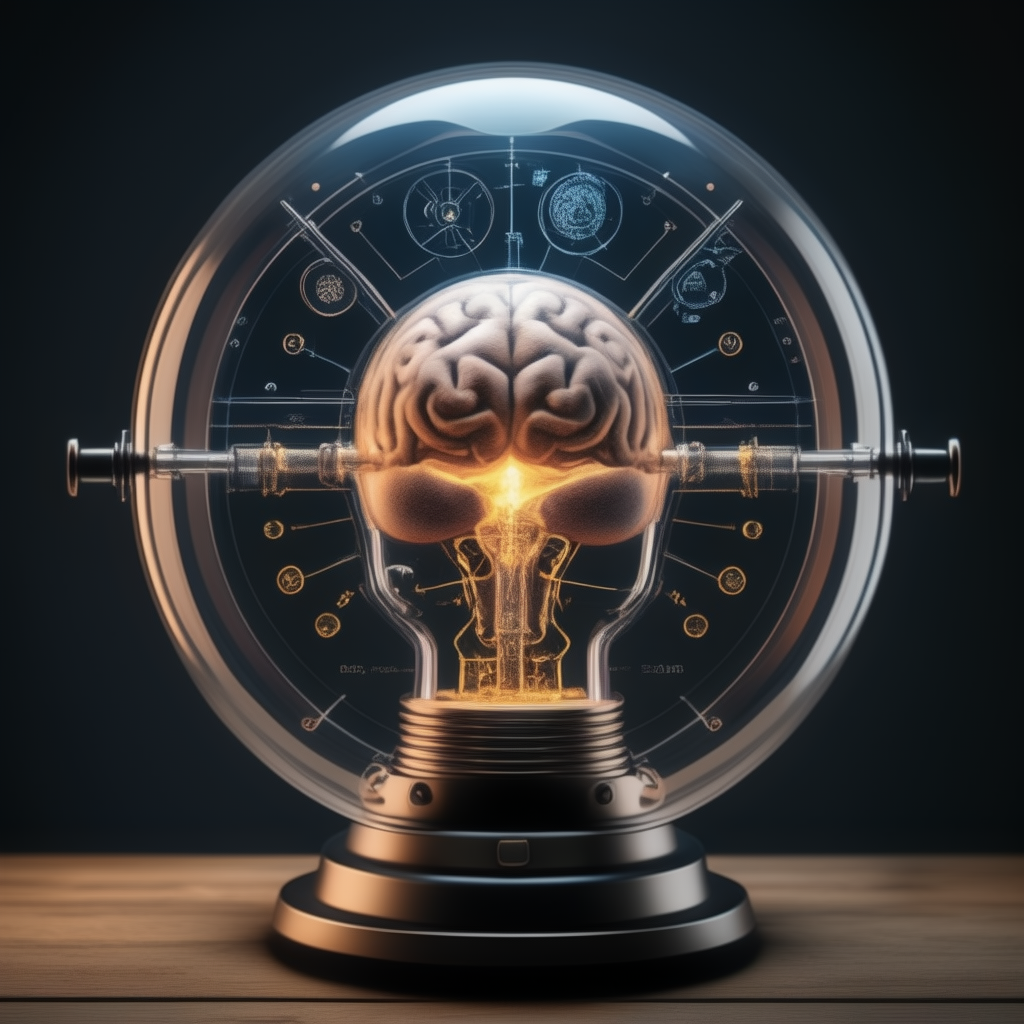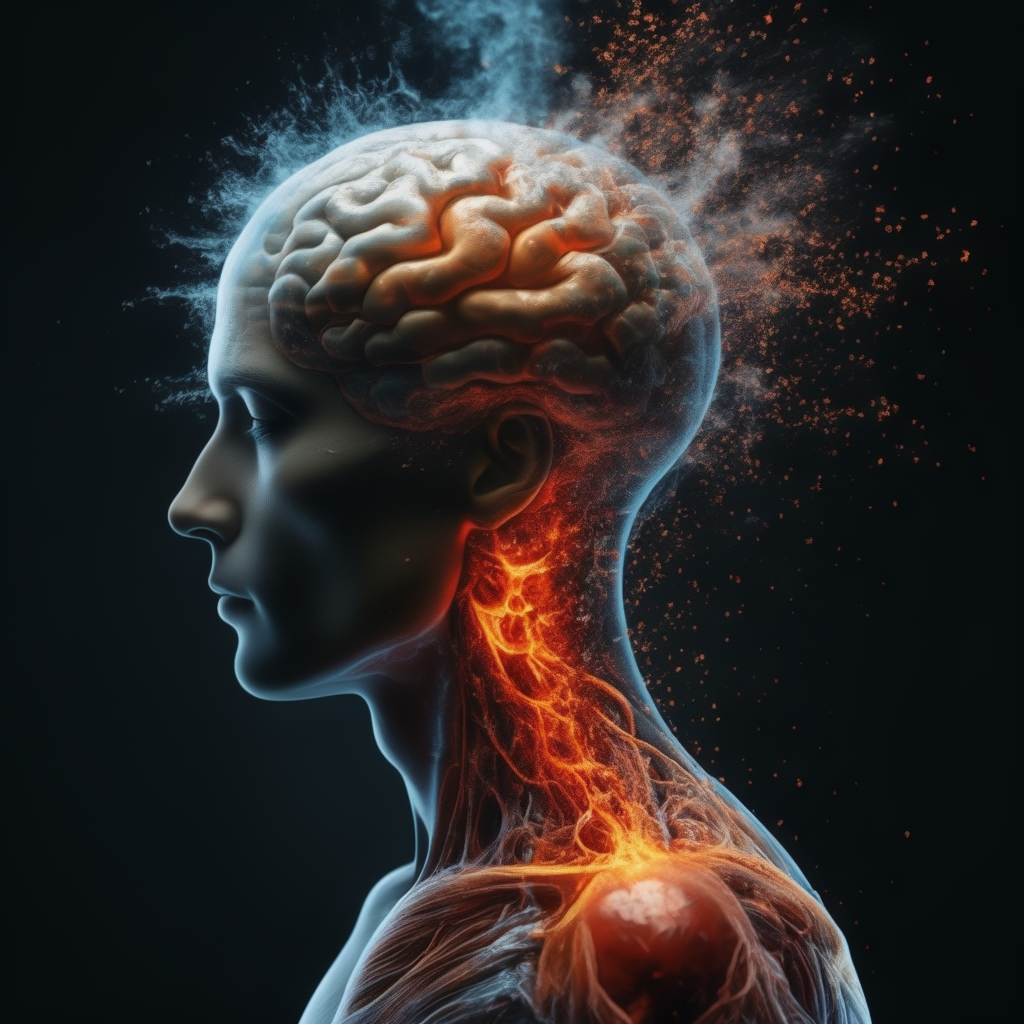Maya Defined: Unraveling the Concept Rooted in Ancient Philosophy
Maya, a term deeply embedded in the tapestry of ancient philosophy, finds its origins in the rich philosophical traditions of India, notably within the realms of Vedanta and Hindu philosophy. The word ‘Maya’ itself is derived from the Sanskrit language, meaning ‘illusion’ or ‘magic,’ and it encapsulates a profound understanding of the illusory nature of the perceived world.
- Vedic and Upanishadic Foundations:
- Maya’s roots can be traced back to the Vedic texts, where it is often associated with the mystical power that conceals the true nature of reality. In the Upanishads, which form the philosophical essence of Vedic thought, Maya is explored in-depth as a key concept in understanding the relationship between the material and spiritual realms.
- Illusionary Nature of the World:
- At its core, Maya encapsulates the idea that the world, as perceived through our senses, is not an accurate representation of the ultimate reality. It suggests that our everyday experiences, though vivid and compelling, are akin to a mirage that veils the deeper truth of existence.
- Brahman and the Manifested World:
- In Vedanta philosophy, Maya is intricately linked to the concept of Brahman, the ultimate reality or cosmic consciousness. Maya is considered the veiling power of Brahman, responsible for creating the illusion of a diverse and tangible world. The manifested world, according to this philosophy, is a projection or superimposition on the canvas of ultimate reality.
- Analogies and Metaphors:
- Philosophers often employ analogies and metaphors to elucidate the nature of Maya. One common analogy is that of a rope mistaken for a snake in dim light. Just as the misperception of the rope as a snake is dispelled with proper illumination, Maya veils the true nature of reality until one gains spiritual insight.
- Dynamic and Transformative:
- Maya is not a static or unchanging concept; it is dynamic and transformative. It is the force that perpetually shapes and reshapes the illusionary world, making it appear diverse and multifaceted. This dynamism emphasizes the impermanence and flux inherent in the perceived reality.
- Maya as a Tool for Liberation:
- While Maya is often portrayed as an obstacle to realizing ultimate truth, it is also seen as a tool for spiritual growth and liberation. By recognizing and transcending the illusions created by Maya, individuals can attain a higher state of consciousness and connect with the unchanging reality beneath the ever-changing appearances.
In essence, introducing Maya involves navigating through the philosophical intricacies of Indian traditions, where it serves as a profound concept that challenges the conventional understanding of reality and invites seekers on a journey to unveil the deeper truths that lie beyond the illusory facade of the perceived world.
Daily Impact: Navigating the Intricate Threads of Maya in Everyday Life
Maya, often considered a profound concept within philosophical domains, transcends its roots and weaves itself into the fabric of our daily lives. Understanding the daily impact of Maya involves unraveling the intricate threads that shape our perceptions and influence decision-making in ways often unnoticed.
- Perception as the Canvas of Maya:
- Maya manifests in the very act of perception. The sensory input we receive creates a canvas upon which Maya paints its illusions. What we see, hear, touch, and feel forms the basis of our understanding of the world, and Maya subtly distorts this understanding, creating a veneer of illusion.
- Influence on Beliefs and Values:
- Maya extends its influence into the realm of beliefs and values. Our cultural, societal, and familial conditioning, often shaped by illusory narratives, becomes the lens through which we interpret the world. Maya molds our beliefs, influencing how we perceive ourselves, others, and the overarching purpose of life.
- Impact on Decision-Making:
- Decision-making, a crucial aspect of daily life, is not exempt from Maya’s influence. Illusions surrounding success, happiness, and societal expectations can cloud our judgment. Maya may entice us to make decisions based on superficial desires or societal norms, diverting us from paths aligned with our true values.
- Desire and Attachment:
- Maya’s impact is pronounced in the realm of desire and attachment. Illusions of what will bring lasting satisfaction or happiness lead to attachments that bind us to the transient and ever-changing aspects of life. Breaking free from these illusions becomes essential for navigating a path of true contentment.
- Illusions of Control:
- The illusion of control is a subtle facet of Maya that permeates daily life. Believing that we have absolute control over our circumstances can lead to frustration and disappointment when confronted with the unpredictable nature of reality. Recognizing the limits of control is crucial for cultivating resilience.
- Social Constructs and Maya:
- Social constructs, such as success, beauty standards, and societal expectations, contribute significantly to the daily impact of Maya. Illusions surrounding these constructs shape our self-perception and influence the choices we make. Breaking free from societal illusions becomes a journey toward authentic living.
- Role in Relationships:
- Maya’s influence extends into interpersonal relationships. Illusions about the nature of relationships, fueled by societal narratives and unrealistic expectations, can lead to conflicts and misunderstandings. A deeper understanding of the illusory nature of certain relationship dynamics fosters healthier connections.
- Spiritual Disconnect:
- In the rush of daily life, Maya often contributes to a spiritual disconnect. The pursuit of material goals and sensory pleasures, fueled by illusory promises of fulfillment, can divert attention from the spiritual dimension of existence. Recognizing and transcending these illusions becomes pivotal for spiritual growth.
Understanding the daily impact of Maya requires a reflective exploration of the illusions that shape our thoughts, actions, and interactions. By peeling back the layers of illusion, individuals can move toward a clearer perception of reality and make choices aligned with their authentic selves.
Misinterpretation of Success: Navigating the Complexity Beyond the Surface
In the contemporary landscape, the concept of success is often presented as a straightforward narrative, leading to a common misinterpretation that oversimplifies the intricate factors contributing to someone’s achievements. By examining situations where success is misunderstood, we can unravel the layers that go beyond the surface.
- Surface-Level Achievements:
- Misinterpretations often stem from focusing solely on the external, surface-level aspects of success. This can include visible accomplishments such as wealth, fame, or accolades, which are easily observable. However, such indicators only scratch the surface of the complex interplay of factors that contribute to genuine success.
- Oversimplified Narratives:
- Media and societal narratives tend to oversimplify success stories for easy consumption. The focus on “overnight successes” or singular achievements can lead individuals to believe that success follows a linear trajectory. This oversimplification disregards the struggles, setbacks, and continuous efforts that contribute to genuine success.
- Neglect of Causative Factors:
- The misinterpretation often lies in neglecting the causative factors behind success. Individuals may see the outcome but miss understanding the journey, perseverance, and strategic decisions that played pivotal roles. This oversight can result in misguided attempts to replicate success without a comprehensive understanding of the contributing elements.
- Comparison Trap:
- The misinterpretation of success fuels the comparison trap, where individuals measure their progress against others based on incomplete information. This can lead to feelings of inadequacy and frustration when one fails to achieve similar outcomes without considering the unique circumstances and paths of each individual.
- Influence of Survivorship Bias:
- Survivorship bias contributes to the misinterpretation by highlighting only the success stories that have endured challenges. Failures and less glamorous aspects are often omitted, creating a skewed perception. Understanding the prevalence of survivorship bias is crucial for a more realistic view of success.
Psychological Impact: Unraveling the Threads of Blind Imitation
The psychological impact of blindly imitating successful figures is profound, as individuals often internalize misleading narratives without grasping the underlying causation. Delving into the psychological repercussions sheds light on the complexities involved.
- Imitation without Understanding:
- Blind imitation occurs when individuals replicate the actions and behaviors of successful figures without a genuine understanding of the causative factors. This can lead to a superficial mimicry that lacks the depth required for sustainable success.
- Expectation-Reality Discrepancy:
- The gap between the expectations set by blindly imitating success and the reality of individual circumstances can result in cognitive dissonance. Individuals may find themselves disheartened when their outcomes do not align with the unrealistic expectations fostered by blind imitation.
- Impact on Self-Esteem:
- The psychological impact extends to self-esteem, as individuals who blindly imitate success may tie their self-worth to external markers of achievement. When faced with challenges or failures, this reliance on external validation can significantly impact self-esteem.
- Overlooking Individual Strengths:
- Blind imitation often leads individuals to overlook their unique strengths and attributes. The focus on replicating external actions may divert attention from recognizing and leveraging individual capabilities, hindering personal growth and development.
- Erosion of Intrinsic Motivation:
- Relying on external models without understanding the intrinsic motivations and passions behind success stories can erode individual intrinsic motivation. Genuine success often stems from aligning actions with personal values and aspirations, a nuance often missed in blind imitation.
- Addressing Cognitive Biases:
- Cognitive biases, such as availability bias and confirmation bias, contribute to the psychological impact. Individuals may selectively focus on information that confirms their beliefs, reinforcing the illusion created by blindly imitating success. Addressing these biases is crucial for cultivating a more realistic mindset.
Understanding the misinterpretation of success and the psychological impact of blind imitation requires a nuanced exploration of the factors that contribute to these phenomena. By dissecting real-world examples and delving into the intricacies of human psychology, individuals can navigate a path toward a more authentic understanding of success and make informed choices aligned with their unique journeys.
Examining Blind Imitation: Peeling Back the Layers of Mimicry
Blind imitation, a behavior ingrained in human social learning, involves replicating observed actions or behaviors without a thorough comprehension of the underlying mechanisms. This phenomenon is pervasive in various aspects of life, from personal aspirations to professional endeavors.
- Instances of Blind Imitation:
- Corporate Leadership Styles:
- In the corporate world, blind imitation is often observed in the emulation of leadership styles. An executive’s success might lead others to mimic their leadership approach without understanding the unique contextual factors that contributed to that success.
- Educational Choices:
- In education, blind imitation can manifest when students select courses or majors solely based on the perceived success of others in those fields. Without understanding personal aptitudes or the evolving job market, students may blindly follow paths that don’t align with their strengths.
- Social Media Influences:
- The influence of social media personalities provides a rich ground for blind imitation. Individuals may replicate lifestyle choices, career paths, or even aesthetic preferences without grasping the complexities of the influencer’s journey.
- Corporate Leadership Styles:
- Consequences of Blind Imitation:
- Superficial Replication:
- Blind imitation often results in superficial replication. Individuals mimic visible aspects, such as behaviors, appearances, or strategies, without delving into the deeper understanding required for genuine success.
- Lack of Adaptability:
- Imitating success without understanding the underlying intricacies can lead to a lack of adaptability. When faced with unforeseen challenges, individuals relying on imitation may struggle to navigate uncharted territory due to a lack of foundational knowledge.
- Vulnerability to Failure:
- Blind imitators are more susceptible to failure when confronted with circumstances that deviate from the replicated model. The absence of a comprehensive understanding leaves them ill-equipped to handle unexpected complexities.
- Stagnation of Innovation:
- Blind imitation stifles innovation. In professional settings, organizations that encourage imitation over understanding may find themselves stagnant, unable to adapt to changing markets or implement creative solutions.
- Emotional Toll:
- The emotional toll of blindly imitating success can be significant. Individuals may experience frustration, anxiety, or a sense of disillusionment when their imitative efforts fail to yield the expected results.
- Superficial Replication:
- Limitations of Blind Imitation:
- Contextual Variations:
- Blind imitation ignores the contextual variations that contribute to success. What works in one scenario may not be universally applicable, and failure to recognize these nuances limits the effectiveness of imitation.
- Individual Differences:
- Each individual possesses unique strengths, weaknesses, and circumstances. Blindly imitating success neglects these individual differences, leading to misguided actions that may not align with personal attributes.
- Innovation and Creativity:
- True success often involves elements of innovation and creativity. Blind imitation, by its nature, discourages the development of these qualities, impeding the potential for groundbreaking achievements.
- Long-Term Sustainability:
- Success built on imitation may lack the foundation for long-term sustainability. Without a solid understanding of causative factors, imitators may struggle to adapt to changing environments, jeopardizing ongoing success.
- Contextual Variations:
Understanding the instances and consequences of blind imitation is crucial for fostering a mindset that values comprehension over replication. It calls for a shift towards learning from success stories rather than attempting to duplicate them without a nuanced understanding of the underlying complexities.
Spiritual Roots: Unraveling the Essence of Maya in Indian Philosophy
In Indian philosophy, Maya stands as a profound and intricate concept deeply embedded in the fabric of spiritual thought. Exploring its roots unveils a philosophical perspective that goes beyond mere illusion, touching upon the very essence of human existence and the nature of reality.
- Maya in Vedanta Philosophy:
- Illusion of Multiplicity:
- Vedanta, one of the six orthodox schools of Hindu philosophy, posits Maya as the force responsible for the illusion of multiplicity in the world. It suggests that the diverse and changing phenomena we perceive are veils that obscure the underlying unity of existence.
- Veiling and Projection (Avarana and Vikshepa):
- Maya operates through two aspects: Avarana, the veiling power that conceals the true nature of reality, and Vikshepa, the projecting power that creates the illusion of a diverse and material world. Together, they weave the intricate tapestry of Maya.
- Beyond Absolute Reality (Brahman):
- Maya is intricately linked with Brahman, the ultimate reality in Vedanta. While Brahman is unchanging and eternal, Maya introduces the element of change and transience, providing the canvas on which the drama of existence unfolds.
- Illusion of Multiplicity:
- Existential Connection: Maya in the Human Experience:
- Individual and Collective Perception:
- Maya extends its influence to the individual and collective human experience. It is not merely a philosophical abstraction but a force that shapes the way individuals perceive themselves, others, and the world around them.
- Subjectivity of Reality:
- Maya introduces subjectivity into our experience of reality. What we perceive is not an objective and unfiltered view of the world but a subjective interpretation influenced by the veiling and projecting powers of Maya.
- Role in Samsara (Cycle of Rebirth):
- Within the cycle of Samsara, the continuous cycle of birth, death, and rebirth, Maya plays a pivotal role. It is the force that binds individuals to the material world, perpetuating the cycle until one transcends the illusion through spiritual realization.
- Individual and Collective Perception:
- Maya’s Influence on Perception and Action:
- Impact on Cognitive Processes:
- Maya influences cognitive processes, shaping how individuals process information, form beliefs, and make decisions. It introduces biases and filters that color our understanding of reality.
- Attachment and Aversion:
- Maya gives rise to attachment and aversion by creating attractions to transient aspects of the material world. This attachment binds individuals to the cycle of Samsara, reinforcing the illusion and hindering spiritual progress.
- Liberation (Moksha):
- Liberation from Maya is a central theme in Indian spirituality. Moksha, or liberation from the cycle of rebirth, involves piercing through the veils of Maya to realize the ultimate reality of Brahman, transcending the illusory nature of the material world.
- Impact on Cognitive Processes:
Understanding the spiritual roots of Maya requires delving into the intricate philosophies of Vedanta and related traditions. It beckons individuals to contemplate the nature of reality, question their perceptions, and seek a deeper understanding that goes beyond the illusions cast by Maya.
Maya’s Impact on the Mind: Unveiling the Psychological Dimensions
Maya, extending beyond its philosophical origins, weaves its intricate threads into the very fabric of our minds. Understanding its psychological impact involves delving into cognitive biases, mental tendencies, and the subtle ways it shapes our perceptions.
- Cognitive Biases Shaped by Maya:
- Confirmation Bias:
- Maya influences confirmation bias, the tendency to seek, interpret, and remember information that confirms pre-existing beliefs. Individuals under the sway of Maya may selectively attend to information that aligns with their distorted perceptions.
- Illusory Correlation:
- Illusory correlation, the perception of a relationship where none exists, can be heightened by Maya. Individuals may erroneously link unrelated events, reinforcing the illusion that certain patterns or causations exist where, in reality, they do not.
- Anchoring Bias:
- Anchoring bias, the reliance on the first piece of information encountered when making decisions, can be influenced by Maya. Individuals under its sway may anchor their beliefs to initial impressions, hindering their ability to perceive reality objectively.
- Confirmation Bias:
- Mental Tendencies in the Grip of Maya:
- Selective Attention:
- Maya shapes selective attention, guiding individuals to focus on specific aspects of their experience while neglecting others. This selective attention reinforces the illusory aspects of perception, creating a distorted view of reality.
- Egocentrism:
- Maya contributes to egocentrism, where individuals prioritize their own perspectives and experiences over alternative viewpoints. This egocentrism fosters a subjective bubble that reinforces distorted perceptions of reality.
- Temporal Discounting:
- Temporal discounting, the tendency to undervalue future rewards in favor of immediate gratification, can be exacerbated by Maya. Individuals may succumb to the illusion that short-term gains hold more significance than long-term consequences.
- Selective Attention:
- Real-world Examples of Maya in Action:
- Influence on Decision-making:
- Maya influences decision-making by distorting the perceived benefits and drawbacks of different choices. Real-world examples may include individuals making impulsive decisions based on immediate gratification, overlooking long-term consequences.
- Relationship Dynamics:
- In relationships, Maya can manifest as individuals idealizing or demonizing others, leading to unrealistic expectations or unfounded fears. This distortion affects how people perceive and interact with one another.
- Career Choices and Goals:
- Maya’s influence extends to career choices and life goals. Individuals may be drawn to pursuits that promise immediate rewards, overlooking the patience and effort required for long-term success.
- Influence on Decision-making:
Understanding Maya’s psychological impact requires a nuanced exploration of cognitive biases and mental tendencies. Real-world examples illuminate how these biases play out in decision-making, interpersonal relationships, and the pursuit of personal and professional goals. Recognizing these influences empowers individuals to navigate the illusions cast by Maya and strive for a clearer, more objective understanding of reality.
Analyzing Blind Thinking: Decoding the Pitfalls of Decision-Making
Blind thinking, influenced by the deceptive veil of Maya, can lead individuals down a path of hasty decisions and misguided actions. Analyzing the impact of blind thinking requires a close examination of decision-making processes and the potential consequences that arise from a lack of clarity in causation.
- Impact of Blind Thinking on Decision-Making:
- Impulsive Decision-Making:
- Under the sway of Maya, individuals may succumb to impulsive decision-making. The illusion distorts the perceived urgency of certain choices, pushing individuals to act without a thorough understanding of the consequences.
- Neglecting Causation:
- Blind thinking often involves neglecting the intricate web of causation behind events. Individuals may overlook the factors contributing to a situation, leading to decisions made in ignorance of the broader context.
- Short-Term Focus:
- Maya can foster a myopic focus on short-term gains. Blind thinking may prioritize immediate benefits without considering the long-term repercussions, leading to decisions that provide momentary satisfaction but lack sustainability.
- Impulsive Decision-Making:
- Illustrative Examples of Blind Thinking Consequences:
- Financial Decision-Making:
- Maya’s influence on blind thinking is evident in financial choices. Individuals may make investment decisions based on fleeting market trends without understanding the underlying economic factors, resulting in financial setbacks.
- Interpersonal Relationships:
- Blind thinking can strain interpersonal relationships. Individuals may react impulsively to perceived slights or misunderstandings, failing to consider the complexities of human interactions and contributing to conflicts.
- Career Pursuits:
- In the professional realm, blind thinking may impact career pursuits. Individuals influenced by Maya might change career paths impulsively, driven by immediate dissatisfaction without a comprehensive understanding of their long-term goals.
- Financial Decision-Making:
- Escaping the Trap of Blind Actions:
- Cultivating Mindfulness:
- Mindfulness acts as a powerful antidote to blind thinking. Cultivating awareness and being present in the moment allow individuals to break free from impulsive decision-making and consider causation more deliberately.
- Analyzing Root Causes:
- Encouraging a habit of analyzing root causes enables individuals to delve deeper into situations. By understanding the underlying factors contributing to events, they can make more informed decisions with a clearer grasp of causation.
- Strategic Decision-Making:
- Strategic decision-making involves considering both short-term and long-term consequences. Individuals breaking free from blind thinking can adopt a strategic approach, weighing the immediate benefits against the enduring impact of their choices.
- Cultivating Mindfulness:
Analyzing blind thinking requires an exploration of its impact on decision-making, especially in contexts like finance, relationships, and career pursuits. Real-world examples illustrate the tangible consequences of decisions made under the influence of Maya. By recognizing the pitfalls of blind thinking, individuals can take proactive steps to escape its trap and make decisions grounded in a more comprehensive understanding of causation.
Maya-induced Amnesia: Unveiling the Self-Deception Veil
Maya, with its illusory influence, extends its grasp beyond distorting external realities; it also plays a role in inducing a selective amnesia that causes individuals to forget their strengths and weaknesses. This form of self-deception is a complex interplay of psychological factors, each intricately woven into the fabric of human cognition.
- Maya’s Contribution to Forgetting Strengths and Weaknesses:
- Selective Perception:
- Maya operates through selective perception, influencing individuals to focus on certain aspects while neglecting others. In this case, strengths may be downplayed or overlooked, and weaknesses might be exaggerated or conveniently forgotten.
- Comparative Illusion:
- The illusion of comparison, fostered by Maya, can lead individuals to measure their strengths against unattainable standards, diminishing their perception of personal strengths and reinforcing a focus on perceived weaknesses.
- Temporal Displacement:
- Temporal displacement, a facet of Maya, may cause individuals to downplay past accomplishments or strengths, focusing instead on present challenges or failures, contributing to a sense of forgetting one’s capabilities.
- Selective Perception:
- Psychological Factors Contributing to Forgetting:
- Confirmation Bias:
- Confirmation bias, a well-documented psychological phenomenon, can contribute to selectively processing information that aligns with pre-existing beliefs. In the context of Maya-induced amnesia, individuals may subconsciously seek information confirming their perceived weaknesses while ignoring evidence of strengths.
- Social Comparison Theory:
- Maya’s impact is amplified by social comparison theory, where individuals evaluate themselves in relation to others. This constant comparative analysis can create a distorted self-perception, especially if the focus is on others’ strengths rather than one’s own.
- Cultural Influence on Self-Esteem:
- Cultural factors, influenced by Maya, contribute to shaping self-esteem. Societal expectations and norms can impact how individuals perceive their strengths and weaknesses, with Maya playing a role in reinforcing culturally driven self-deceptions.
- Fear of Judgment:
- Fear of judgment, instilled by societal norms perpetuated by Maya, can lead individuals to downplay their strengths to fit into perceived expectations or avoid standing out. This fear-driven self-deception becomes a coping mechanism in navigating societal pressures.
- Confirmation Bias:
- Breaking the Illusion:
- Self-Reflection Practices:
- Engaging in self-reflection practices can aid in breaking the illusion of forgetting strengths. Regular introspection allows individuals to recognize and appreciate their accomplishments, reinforcing a more balanced self-perception.
- Positive Affirmations:
- Positive affirmations serve as a powerful tool against Maya-induced amnesia. By consciously acknowledging and repeating positive aspects of oneself, individuals can counteract the negative self-deception perpetuated by Maya.
- Objective Self-Assessment:
- Cultivating the ability for objective self-assessment involves critically evaluating strengths and weaknesses without the influence of external illusions. This requires a clear understanding of one’s capabilities, unclouded by Maya’s distortions.
- Self-Reflection Practices:
Maya-induced amnesia, contributing to the forgetting of strengths and weaknesses, is a nuanced interplay of selective perception, psychological biases, and societal influences. Understanding the intricate details of these factors is crucial for individuals seeking to break free from the self-deception veil woven by Maya. By dissecting the psychological intricacies at play, individuals can embark on a journey towards a more authentic and grounded self-perception.
Unraveling Events: Decoding the Causation Tapestry
Understanding the causation behind events is akin to unraveling a complex tapestry, where each thread represents a variable contributing to the overall picture. In the realm of  , events often appear distorted or misleading, demanding a meticulous unraveling to reveal the true nature of causation.
, events often appear distorted or misleading, demanding a meticulous unraveling to reveal the true nature of causation.
- Importance of Understanding Causation:
- Rooting in Reality:
- Understanding causation is the anchor that roots our interpretations in reality. It’s the antidote to Maya’s distortions, allowing us to perceive events without the veils of illusion.
- Informed Decision-Making:
- Causation is the compass for informed decision-making. Without comprehending the underlying factors, decisions are susceptible to the influence of Maya, leading to misguided actions.
- Clarity in Perception:
- Causation brings clarity to our perception. It disentangles the web of distorted information, providing a lucid view of the factors at play in any given event.
- Rooting in Reality:
- Methods of Analysis:
- Critical Analysis:
- Critical analysis involves questioning every aspect of an event. It requires a conscious effort to scrutinize information, considering multiple perspectives and potential biases. Critical thinking acts as a flashlight, piercing through Maya’s shadows.
- Thorough Examination:
- Thorough examination demands a deep dive into the details. It involves meticulous scrutiny of each variable, leaving no stone unturned. This method requires patience and persistence, essential virtues in decoding causation.
- Questioning Assumptions:
- Maya often thrives on unexamined assumptions. To decode causation, one must question assumptions underlying the perceived reality. This involves challenging preconceived notions and being open to alternative explanations.
- Seeking Diverse Perspectives:
- Causation is multi-faceted, and seeking diverse perspectives is akin to assembling a puzzle with varied pieces. Engaging with different viewpoints broadens the scope of analysis, providing a more comprehensive understanding.
- Temporal Considerations:
- Temporal considerations involve examining the timeline of events. Understanding the sequence of occurrences is vital, as Maya can distort the perception of cause and effect. A thorough chronological examination aids in unraveling causation.
- Systems Thinking:
- Events are often interconnected, forming a system. Adopting a systems thinking approach allows one to decipher the interdependencies and feedback loops within an event, revealing hidden layers of causation.
- Critical Analysis:
- Steps in Decoding Events:
- Step 1: Question Everything:
- Begin by questioning every piece of information. Challenge assumptions, biases, and preconceived notions to create a foundation for unbiased analysis.
- Step 2: Examine Multiple Perspectives:
- Gather diverse perspectives to avoid tunnel vision. Maya often distorts when we limit ourselves to a single viewpoint.
- Step 3: Break Down Events into Components:
- Deconstruct events into their components. Identify key players, factors, and circumstances contributing to the event’s unfolding.
- Step 4: Consider Temporal Factors:
- Analyze the temporal sequence of events. Understanding the chronological order helps in establishing a clearer causative narrative.
- Step 5: Apply Critical Thinking:
- Engage in critical thinking throughout the analysis. Be vigilant against cognitive biases and be willing to revise conclusions based on new information.
- Step 6: Systemic Analysis:
- Embrace a systemic analysis, recognizing the interconnectedness of variables. Events rarely occur in isolation, and understanding the systemic context adds depth to causation understanding.
- Step 1: Question Everything:
Decoding events involves a conscious and systematic effort to unravel the causation tapestry. By employing critical analysis, thorough examination, and a methodical approach, individuals can navigate through Maya’s illusions and perceive events with greater clarity and understanding.
Critical Thinking Defined: Decoding the Maya of Reality
1. Emphasizing the Role of Critical Thinking:
Critical thinking stands as the antidote to the illusory influences of Maya, serving as the cognitive compass that guides individuals through the intricacies of decoding reality. Understanding critical thinking involves breaking down its components and recognizing its application in navigating the complexities of the world.
- Components of Critical Thinking:
- Analysis:
- Critical thinking begins with a deep analysis of information, requiring individuals to dissect data, ideas, or situations into their fundamental components. This involves breaking down complex information into manageable parts for a thorough examination.
- Interpretation:
- The ability to interpret information accurately is central to critical thinking. This involves understanding the meaning of information, recognizing patterns, and discerning the implications of various elements within a context.
- Inference:
- Critical thinkers excel in making logical inferences based on available information. This component involves drawing reasonable conclusions and filling in gaps in understanding, allowing for a more comprehensive grasp of a situation.
- Explanation:
- Communicating one’s thought process coherently is a crucial aspect of critical thinking. This involves articulating the reasoning behind conclusions, making the thinking process transparent and accessible to others.
- Evaluation:
- Critical thinkers continuously evaluate information for relevance, credibility, and significance. This component ensures a discerning approach to assessing the quality and reliability of data or arguments.
- Problem-Solving:
- At its core, critical thinking is a tool for effective problem-solving. Individuals adept at critical thinking can navigate challenges, devise solutions, and adapt their thinking based on evolving circumstances.
- Analysis:
2. Practical Tips for Fostering Analytical and Logical Thinking:
2.1. Cultivate Curiosity:
- Ask Questions:
- Critical thinking begins with a curious mind. Encourage the habit of asking questions about the world, seeking to understand the reasons behind events, decisions, and phenomena.
- Explore Diverse Perspectives:
- Exposure to diverse perspectives broadens the scope of critical thinking. Actively seek out opinions and ideas different from your own, fostering a more comprehensive understanding of complex issues.
2.2. Hone Information Literacy:
- Verify Sources:
- Critical thinking relies on accurate information. Develop the skill of verifying sources, ensuring that the information you base your conclusions on is reliable and credible.
- Distinguish Fact from Opinion:
- Train yourself to distinguish between factual information and opinions. Critical thinkers can navigate through biases by recognizing the objective elements of a situation.
2.3. Practice Reflection:
- Journaling:
- Regular reflection, such as journaling, provides an opportunity to process thoughts and experiences. Writing down your reflections can reveal patterns in thinking and aid in refining your approach.
- Debriefing:
- After significant events or decisions, take the time to debrief. Analyze what worked well, what could be improved, and what factors influenced the outcome. This reflective practice enhances critical thinking skills.
2.4. Engage in Socratic Questioning:
- Question Assumptions:
- Socratic questioning involves challenging assumptions. Practice questioning your own assumptions and those present in information or arguments, fostering a habit of critical examination.
- Explore Consequences:
- Delve into the potential consequences of decisions or actions. This form of questioning encourages a forward-thinking approach and a consideration of the broader impact of choices.
2.5. Develop Logical Reasoning:
- Practice Logical Puzzles:
- Engage in activities that challenge logical reasoning, such as solving puzzles or riddles. These exercises enhance the brain’s ability to think logically and analytically.
- Analyze Cause and Effect:
- Train yourself to analyze cause-and-effect relationships. Understand the chain of events leading to a particular outcome, recognizing the interconnected nature of variables.
2.6. Embrace Continuous Learning:
- Explore New Subjects:
- Critical thinking thrives on a broad base of knowledge. Actively seek to learn about new subjects, even those outside your comfort zone, fostering a multidisciplinary approach to thinking.
- Update Your Knowledge:
- Stay informed about developments in your areas of interest. Regularly updating your knowledge ensures that your thinking is based on the latest information.
2.7. Foster a Growth Mindset:
- Embrace Challenges:
- A growth mindset involves seeing challenges as opportunities for growth. Approach difficulties with curiosity and a willingness to learn, enhancing adaptability and critical thinking.
- Learn from Failure:
- Instead of viewing failure negatively, see it as a chance to learn. Analyze the factors that led to failure, extracting lessons that contribute to future success.
In essence, critical thinking is both a mindset and a set of skills that can be cultivated through deliberate practice. By understanding its components and adopting practical tips, individuals can develop a robust capacity for analytical and logical thinking, providing a powerful tool for decoding the intricate Maya of reality.
Strategies for Clarity: Navigating the Labyrinth of Illusions
1. Mindfulness Practices to Overcome Blind Perceptions:
Mindfulness stands as a potent antidote to blind perceptions and biases, offering individuals a set of strategies to navigate the labyrinth of illusions that Maya often presents.
- Mindful Observation:
- Mindfulness encourages the practice of observing thoughts, emotions, and external stimuli without immediate judgment. By cultivating the ability to observe without reacting, individuals can break free from impulsive, blind responses.
- Present Moment Awareness:
- The heart of mindfulness lies in being fully present in the current moment. This practice fosters an acute awareness of the surrounding environment, minimizing the influence of past assumptions or future anxieties.
- Breath Awareness:
- Anchoring attention to the breath is a fundamental mindfulness technique. This simple yet powerful practice provides a focal point, grounding individuals in the present and reducing the likelihood of being swayed by preconceived notions.
2. Significance of Cultivating Self-awareness:
Cultivating self-awareness is akin to turning on a light in the dark corners of the mind. It is a foundational step towards breaking free from illusions and gaining a clearer perception of reality.
- Identification of Biases:
- Self-awareness enables individuals to identify their own biases and prejudices. Acknowledging these biases is a crucial first step in dismantling their influence on perceptions and decision-making.
- Understanding Emotional Triggers:
- Emotions often act as veils that distort reality. By developing self-awareness, individuals can recognize emotional triggers and understand how these triggers may color their perceptions.
- Exploring Core Beliefs:
- Uncovering and examining core beliefs provides insight into the lenses through which individuals interpret the world. Self-awareness allows for a conscious exploration of these beliefs, facilitating a more objective understanding of reality.
- Reflection on Personal Experiences:
- Reflecting on personal experiences fosters self-awareness by examining the impact of past events on current perceptions. This reflective practice allows individuals to discern whether their responses are based on reality or past conditioning.
3. Mindfulness in Breaking Free from Illusions:
Mindfulness, when coupled with self-awareness, becomes a dynamic force in breaking free from the illusions that Maya casts. It allows individuals to see through the veils of distorted perceptions and gain clarity.
- Detachment from Thoughts:
- Mindfulness encourages individuals to view thoughts as passing phenomena rather than absolute truths. This detachment from thoughts reduces the likelihood of being ensnared by cognitive distortions.
- Non-Identification with Emotions:
- Instead of becoming entangled in emotions, mindfulness promotes observing emotions as temporary states. This non-identification with emotions prevents emotional biases from clouding one’s perception.
- Clarity in Decision-making:
- With mindfulness and self-awareness, decision-making becomes a clearer and more deliberate process. Individuals can make choices based on a deeper understanding of the present moment rather than succumbing to automatic, biased responses.
- Enhanced Emotional Regulation:
- Mindfulness practices contribute to improved emotional regulation. This heightened emotional intelligence allows individuals to navigate challenges with composure, reducing the likelihood of being swept away by illusions.
4. The Role of Mindfulness in Daily Life:
- Mindful Communication:
- Integrating mindfulness into communication involves being fully present in conversations. This practice enhances active listening and minimizes misinterpretations, fostering clearer interpersonal interactions.
- Mindful Decision-making:
- Mindfulness contributes to more thoughtful and mindful decision-making. By bringing heightened awareness to choices, individuals can discern the potential consequences and implications of their actions.
- Mindful Consumption of Information:
- In an era of information overload, mindfulness guides individuals in the discerning consumption of information. It encourages a critical evaluation of sources and a conscious awareness of the potential biases inherent in information.
In essence, mindfulness and self-awareness are transformative tools that empower individuals to dismantle the illusions woven by Maya. By embracing these practices, individuals can develop a clearer perception of reality, free from the entanglements of blind perceptions and biases.







